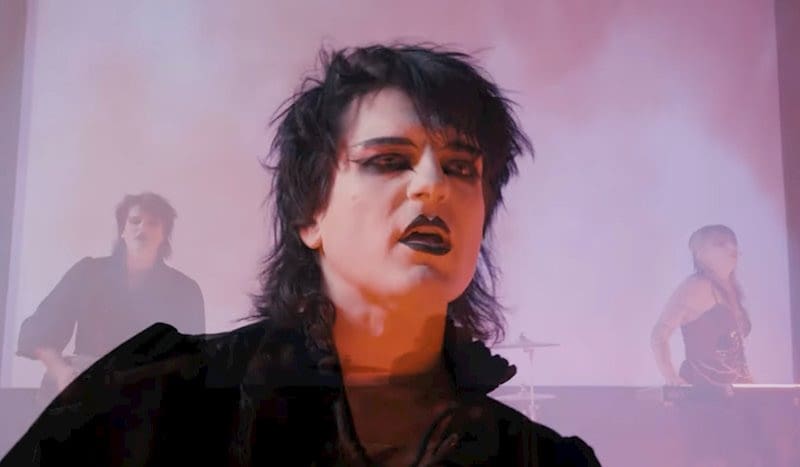The 10 Best Posthumous Albums By Great Artists


It’s always a terrible tragedy when a talented artist dies. Whether they’re in the prime of life or enjoying a more advanced age, every musician always has more to give when they reach the end of their days. Many artists remain successful after their death; you can check out this awesome infographic if you want to see who the most celebrated artists who’ve passed on are. Not all of the albums released after those artists’ deaths are high-quality, but many are. Here are the 10 best posthumous albums by great artists. We’re not counting greatest-hits compilations in this list.
1. David Bowie – Blackstar
We’re cheating a little with this one, because Blackstar – stylised as ☆ – was technically released shortly before David Bowie’s death. The album is so closely tied to Bowie’s life and his impending end, however, that it can only be considered a posthumous album. Blackstar is an astonishingly experimental work for an artist at the end of their life. Tracks like “Lazarus” and “I Can’t Give Everything Away” are tear-jerking odes to Bowie’s life, while “Sue (Or In A Season Of Crime)” and the title track bring the weird.
2. Nirvana – MTV Unplugged In New York
This album was recorded prior to Kurt Cobain’s death (obviously), but wasn’t released until around a year after he died. It contains some of the most chilling renditions of Nirvana classics you’re likely to hear, as well as pained versions of David Bowie’s “The Man Who Sold The World” and Leadbelly’s “Where Did You Sleep Last Night”. Cobain’s torment is evident after the fact, but MTV Unplugged In New York remains a fine record and one of the best acoustic albums ever released.
3. Notorious B.I.G. – Life After Death
Life After Death landed just weeks after the drive-by shooting that claimed Biggie’s life. Two of the late rapper’s most famous tracks – “Hypnotize” and “Mo’ Money Mo’ Problems” – appear on this record, cementing it as the definitive testament to Biggie’s genius. His trademark charisma and sense of humour are both present here, undercut by a newfound love of life that makes his passing all the more tragic. Not a day goes by when we don’t lament the passing of the Notorious B.I.G.
4. Janis Joplin – Pearl
The world lost a truly original and brilliant voice in Janis Joplin. She’s a member of the tragic “27 Club”, a group of musicians who lost their lives at the age of 27 (the group also contains Jimi Hendrix, Kurt Cobain, and Amy Winehouse). On Pearl, Joplin sings like a woman fifty years her senior, imbuing every note of classics like “Move Over” and “Me and Bobby McGee” with painfully bluesy sincerity. She would undoubtedly have gone on to be even more incandescent if she had lived.
5. Amy Winehouse – Lioness: Hidden Treasures
Amy Winehouse’s downfall was as tragic as it was utterly preventable. Asif Kapadia’s excellent film Amy tells a story of complicity and obsession on the part of the media, who played a massive part in her demise. Lioness: Hidden Treasures contains some of her best and most interesting work, and although it’s definitely a footnote compared to the two classic full albums she left behind, it’s still well worth a listen if you’re a fan (and you very much should be).
6. Mac Miller – Circles
A more recent entry, the excellent Circles by Mac Miller demonstrates the doomed singer’s full mastery of his craft. From the opening track, Miller’s emphatic sigh of a voice and off-kilter pronunciation are beautiful counterpoints to the quirky D’Angelo-style soul instrumentals on this album. If you’re new to Mac Miller – or, indeed, if you’re a longtime fan looking to get back into his work – then Circles is absolutely the place to start. Miller’s death touched the world, and on Circles, it’s not hard to see why.
7. Elliot Smith – From a Basement on the Hill
Elliot Smith’s idiosyncratic mixture of downbeat vocals and pretty art-pop melodies makes From a Basement on the Hill a wonderful listen despite its somewhat depressing subject matter. Smith’s death is still a little shrouded in mystery, but From a Basement on the Hill is not mysterious in its confidence. It contains some of Smith’s best work, from “Pretty (Ugly Before)” to the trippy closer “A Distorted Reality Is Now a Necessity To Be Free”. The legacy of Radiohead is writ large on this one.
8. Jeff Buckley – Sketches For My Sweetheart, The Drunk
Another tragic case much like Elliot Smith, Jeff Buckley was destined for stardom from the beginning. His songwriter father Tim passed on much of his progressive writing ideology, and Jeff’s first album Grace demonstrated his astonishing emotional range and beautifully trembling voice. Sketches isn’t quite the monster Grace was, but tracks like “Everybody Here Wants You” and “Vancouver” show that Buckley’s range was expanding.
9. Joy Division – Closer
Oh, boy. Ian Curtis’ final statement isn’t one for the faint of heart. You won’t find singles like “She’s Lost Control” or “Love Will Tear Us Apart” on this one. When the opening track is titled “Atrocity Exhibition” (also the name of an excellent Danny Brown album) and it’s all downhill from there, you know Joy Division isn’t playing for laughs. “Isolation” and “The Eternal” are essential, but the whole of Closer demonstrates an expanded range that makes Curtis’ and the band’s demise all the sadder.
10. Gram Parsons – Grievous Angel
Gram Parsons’ vision for his music was so singular and unique that he pioneered an entire genre, known as “cosmic American music”. This style fused a number of classic American styles including country and soul to create something completely unique to Parsons, and nowhere is that better evidenced than on Grievous Angel. “Love Hurts” is transcendent, but “$1000 Wedding” is fun and light, proof that Parsons had range. He overdosed before he could see how great this album would go on to become. Some of the stats in this article were taken from Betway.
Since you’re here …
… we have a small favour to ask. More people are reading Side-Line Magazine than ever but advertising revenues across the media are falling fast. Unlike many news organisations, we haven’t put up a paywall – we want to keep our journalism as open as we can - and we refuse to add annoying advertising. So you can see why we need to ask for your help.
Side-Line’s independent journalism takes a lot of time, money and hard work to produce. But we do it because we want to push the artists we like and who are equally fighting to survive.
If everyone who reads our reporting, who likes it, helps fund it, our future would be much more secure. For as little as 5 US$, you can support Side-Line Magazine – and it only takes a minute. Thank you.
The donations are safely powered by Paypal.













